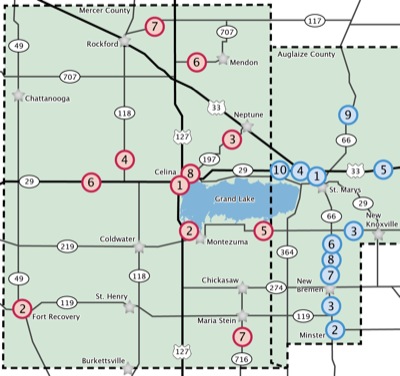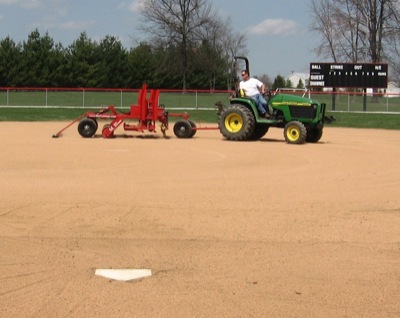Wednesday, April 14th, 2010
Building costs range from $4-11 million
Fort Recovery
By William Kincaid
FORT RECOVERY - A possible school project has been boiled down to three options with cost figures.
Board members on Monday night learned of the district's three primary options from Brad Garmann and Rudy Quinter of Garmann/Miller Architects, Minster.
The district is at the top of the Ohio School Facilities Commission's (OSFC) list for funding.
A consolidated PK-12 building would cost $10.3 million, with the state paying $4.8 million and the district paying $5.5 million; a renovated high school using state dollars would cost $11.05 million, with the state paying $4.99 million and the district paying $6.06 million; and a scaled-down renovation of the high school with no state dollars would cost the district $4.4 million.
Under the first option, a new high school would be added to the existing elementary and middle school. The current high school gym, vo-ag area and commons would be saved, with the rest of the building demolished.
The saved portion of the current high school would require its own new boiler, board members learned.
As of Monday night, the plans did not include a weight room, which would be demolished with the old part of the high school.
According to Superintendent Pat Niekamp, the district could save money by constructing its own weight room outside of the OSFC project, which has its own cost calculation for square feet.
"You take it out of the plan, it's going to be half as much or less," Niekamp said.
Niekamp said the school is discussing a joint-project with the athletic boosters, but nothing has been finalized. Such an endeavor probably would be the largest undertaking ever by the organization, according to Niekamp.
The second option calls for a $11.05 million renovation of the current high school that would retain all of the facility except the 1935 section.
An extensive restoration of the 1953 section and board offices, 1962 science wing, 1973 gym, 1992 vo-ag area and other areas should give the building an additional 40 years of life, according to Garmann.
The final option would see the district using its own money to complete $4.4 million in renovations to the HVAC system, roofs, ventilation/air-conditioning, electrical system, plumbing, windows and other areas.
The renovation would extend the life of the building by 20 years and keep the 1935 section of the school, but would not be near as extensive as option two, Garmann said.
Members of the public are invited to a special meeting at 7 p.m. Monday in the high school commons to voice their opinions about a possible construction project.
"It will be interesting to get the public's viewpoint," board president Jack Staugler said.
He also asked board members if they're ready to make a decision even if it goes against what those at the meeting indicate.
High School Principal Jeff Hobbs said those in attendance probably will represent a very small sampling of the community.
In addition to educational needs, upfront costs and operational costs, Niekamp said those at the meeting may discuss personnel costs.
Community members must also consider the issue of student displacement. A high school renovation project would force school officials to set up temporary modulars for students to attend certain classes while construction is ongoing.
The district will receive 79 percent in state funding for renovation of the current high school or for construction of a new high school.
The other 21 percent would come from the community through a bond levy if approved by voters. Board members must develop a master plan and determine needed millage by August to get the issue on the November ballot.





